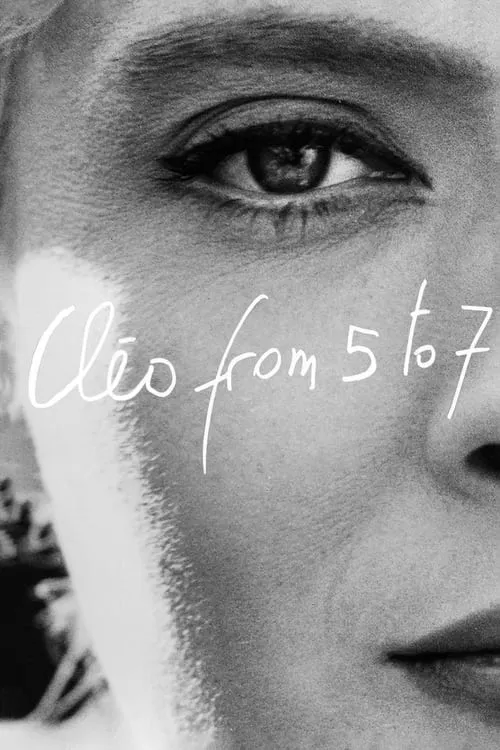Cléo from 5 to 7

Plot
Cléo from 5 to 7, a cinematic masterpiece directed by the innovative Agnès Varda, is a poignant and captivating exploration of one woman's journey through the vibrant city of Paris in the 1960s. The film's narrative unfolds in real-time, mirroring the anxiety and anticipation of its protagonist, Cléo, as she awaits the results of a biopsy. This meticulously crafted portrait delves into the complexities of Cléo's life, showcasing the intricate balance between her public persona and private struggles. Cléo, portrayed by the charismatic Corinne Marchand, is a celebrated French singer whose career is on the ascendant. With her latest single topping the charts, she is the epitome of stardom in the ever-changing landscape of 1960s Paris. However, beneath the glamorous facade, Cléo is grappling with the uncertainty of her biopsy results. This looming threat to her well-being is a constant presence, casting a shadow over her every waking moment and fueling her growing sense of unease. As Cléo navigates the cobblestone streets of Paris, she is surrounded by an array of intriguing characters who offer fleeting yet profound insights into her predicament. Her encounters with these individuals – a photographer, a hairdresser, a gypsy fortune teller – serve as a catalyst for Cléo's introspection, forcing her to confront the imperfections and vulnerabilities that lie beneath her polished public image. The film's cinematography is a breathtaking tribute to the cinematic artistry of Agnès Varda. Through the lens of her camera, the city of Paris is transformed into a kaleidoscope of colors, textures, and sounds. The real-time format, which allows for seamless transitions between Cléo's various adventures, further accentuates the fluidity and immediacy of the narrative. This unorthodox storytelling approach not only captures the fragmented nature of Cléo's thoughts but also creates a sense of urgency, emphasizing the ticking clock that underscores her anxious anticipation. Throughout the film, the soundtrack is a masterful blend of pop, jazz, and folk, carefully curated by the inimitable Michel Legrand. The music, a perfect reflection of Cléo's emotional state, oscillates between optimism and despair, perfectly capturing the turbulent landscape of her inner world. The iconic theme song, "A Place for Lovers," sung by Cléo herself, becomes a recurring motif, its melody weaving its way through the narrative like a thread, symbolizing Cléo's hopes, fears, and desires. One of the most striking aspects of Cléo from 5 to 7 is its ability to balance vérité (realism) and melodrama. This seemingly disparate fusion creates a unique cinematic experience that is both poignant and cathartic. Varda's direction masterfully navigates the tension between the grittiness of everyday life and the heightened emotions of melodrama, resulting in a film that is both a tender portrayal of a woman's inner struggles and an unsparing examination of the human condition. The appearances by prominent French New Wave figures, including Jean-Luc Godard and Anna Karina, add an additional layer of cultural significance to the film. Godard's cameo, in particular, has become a subject of fascination among cinephiles, with many interpreting it as a winking nod to the nascent New Wave movement. The presence of these influential filmmakers underscores the importance of Cléo from 5 to 7 as a landmark work of French cinema, a testament to the pioneering spirit of the 1960s. Ultimately, Cléo from 5 to 7 is a deeply human film that transcends its biographical parameters to become an exploration of the universal themes that bind us all: love, loss, hope, and the fragility of life. Varda's masterpiece lingers long after the credits roll, leaving the viewer with a profound appreciation for the complexities of the human experience and the enduring power of cinema to capture the beauty and brutality of our existence.
Reviews
Recommendations




